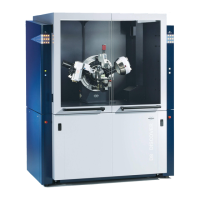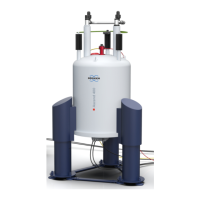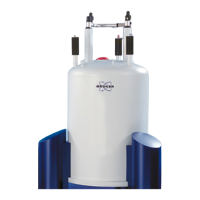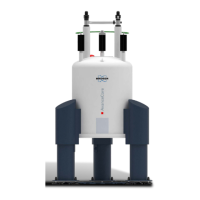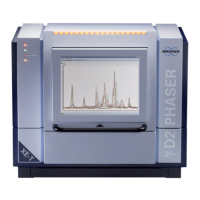Utility Requirements
H157654_9_011 73 / 120
8.7.2 System Stability
Air Temperature
The heat dissipation of the magnet system is constant over time. It is essential to minimize or
avoid short term oscillations of the HVAC system, and provide a continuous slow flow of air
that in turn reduces the speed of any temperature changes. It is recommended to have a con-
tinuous and slow exchange of air in the laboratory, hence minimizing fluctuations.
Air Diffuser and Return Ducts
• Avoid any air drafts in the room, especially towards the magnet or system electronics.
• Use low velocity diffusers or a perforated duct (e.g. a duct sock).
• In order to remove heat directly from the source it is recommended placing the air return
ducts closer to the rear side of the system electronics.
Atmospheric Pressure Changes
Rapid changes in the temperature may result in atmospheric pressure changes. High atmo-
spheric pressure could reduce the helium boil off if the magnet cryostat is not equipped with
an electronic atmospheric pressure device. The boil-off rate could be even lower than the
minimum value which could be measured by the flow meter. Electronic Atmospheric Pressure
Devices (EAPD), which, for example, holds the pressure at 1030 HPa, stabilize field drift and
helium boil-off when changes in atmospheric pressure occur.
The atmospheric pressure device is available as an option for many Bruker magnets, contact
Bruker for details.
8.8 Emergency Ventilation During Installation and Quenches
Due to the large amount of liquid helium contained in the magnet, an emergency exhaust
system may be required to prevent O
2
depletion during a magnet quench.
Likewise, during the installation, refilling and cooling of superconducting magnets, large vol-
umes of nitrogen or helium gases may be generated under certain conditions. Although these
gases are inert, if generated in large enough quantities, they can displace the oxygen in the
room causing potential danger of suffocation.
The following table lists the maximum helium capacity and the typical gas flow rates for he-
lium gas during a quench for current magnet systems. Generally, the gas flow rate is equal to
half the volume in one minute.
